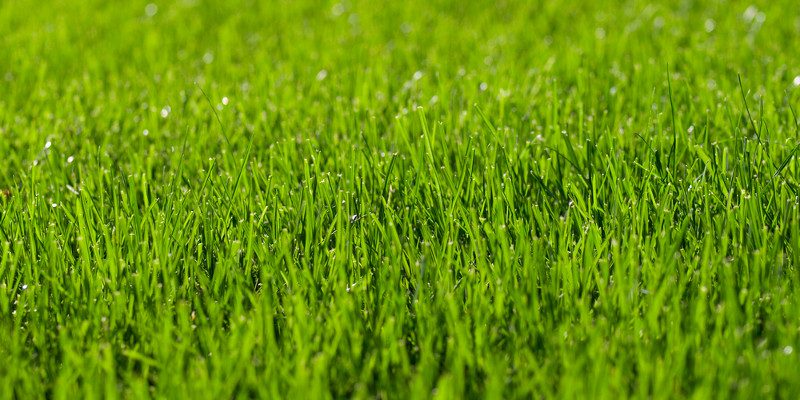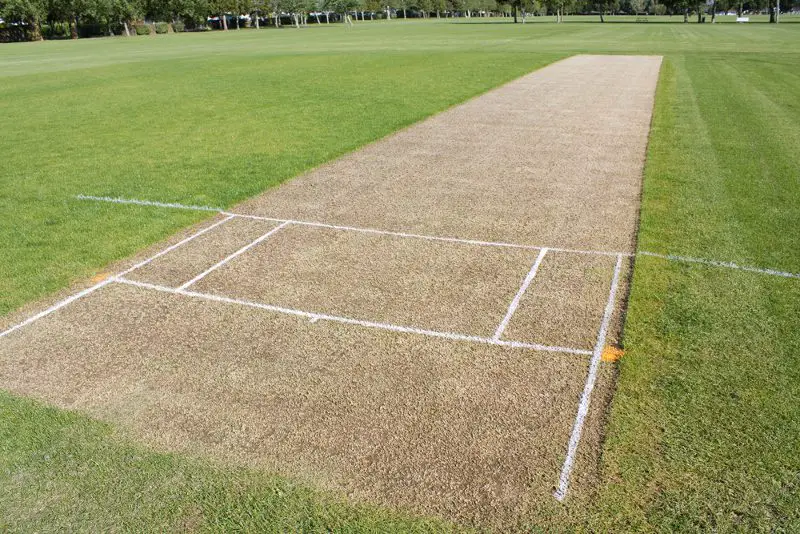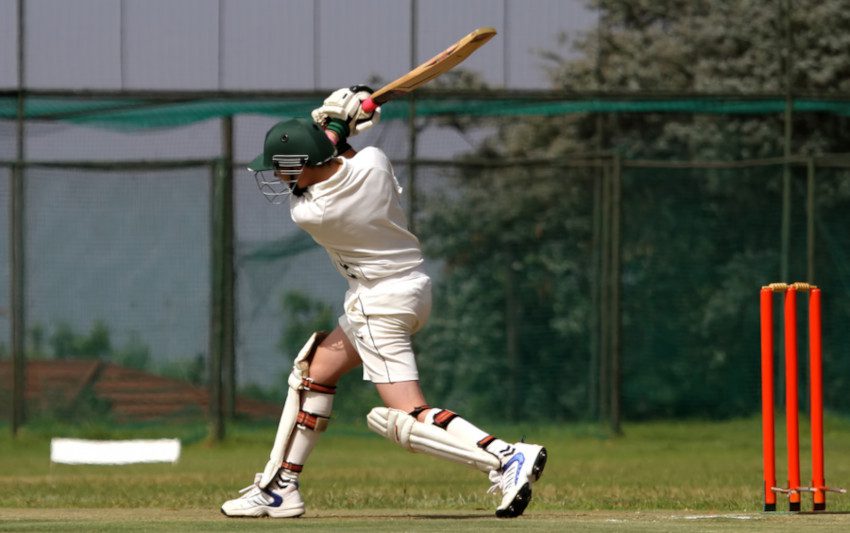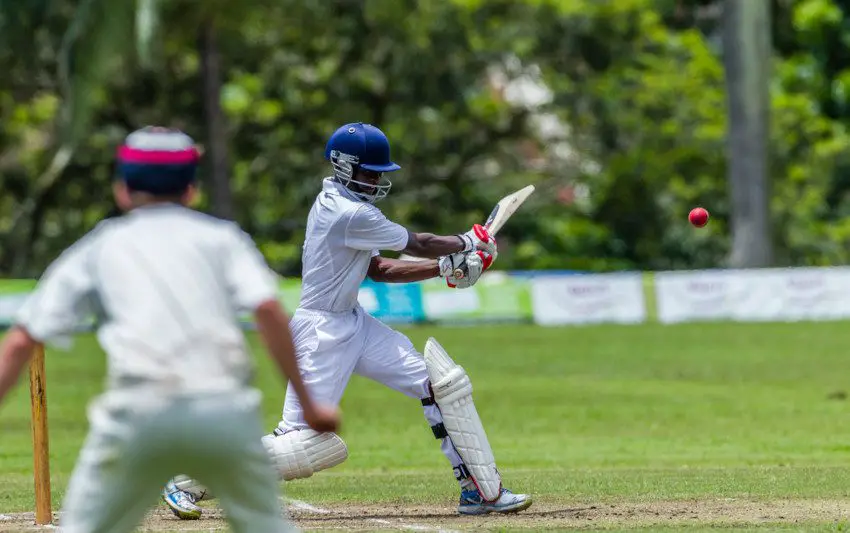Table of Contents
We’ve probably all heard commentators speak about dew factor. It’s a common issue in limited overs matches which are played under lights but what does it mean?
What is Dew Factor in Cricket?
Dew is simply moisture that forms in the grass on the cricket outfield. It arises due to temperature differences between the ground and the air, and it appears with greater volume later in the day. The moisture can then affect the condition of the ball and of the cricket field itself.

How Does Dew Affect a Cricket Game?
For the Cricket Pitch
There are two parts of the surface to consider – the pitch and the outfield. Remember that the pitch is the 22-yard patch of grass where the action takes place.
As the game wears on and dew becomes a factor, the pitch can get slower and it can start to break up.
As for the outfield, the grass here is much longer and this area of the ground will be wetter. This is where the ball will pick up moisture as it travels along the surface.

For the Bowlers
The dew factor in a game will affect all types of bowlers. When the ball hits a wetter surface, it will lose some of its momentum. Lack of bounce can subsequently be an issue for all types of bowlers.
However, we should split those players into categories in order to fully understand the problems that they face.
Fast Bowlers
For all types of bowlers, the main problems thrown up by the dew factor relate to the grip. When the ball is wet, it is much harder to control and to produce a bowler’s regular skill set.
The specific problem for fast bowlers lies in their ability to shine the ball. All of the quicker bowlers will look to maintain a shine on one side while the other one is left to rough up. This aids the swing factor during the match.
When a ball becomes wet on the damp, dewy outfield, it starts to become impossible to maintain that shine. The ball then starts to become uniform in both of its hemispheres and is less likely to swing or move off the pitch.
The faster bowlers will now look to bowl cross seam deliveries in the hope that the ball will do something off the pitch. This can still give the bowling side an advantage but the inability to shine the ball is a big problem.
Spin Bowlers
Spinners will tell you that they have the biggest challenge of all when dew becomes a factor. Whether they are a leg spinner or an off spinner, the need to grip the ball tightly is imperative. When that ball becomes wet, it’s so much harder to apply that grip and control those deliveries.
The finger spinners (off spinners) have a tougher challenge, but all slower bowlers are affected. It’s extremely hard to get the revolutions on the ball that a finger spinner requires in order for it to turn.
For that reason, there is a greater reliance on line and length and changes of pace when the ball is wet. There are ways in which the spinners will be able to overcome things, but a wet ball is definitely a big disadvantage.
For the Batters
It’s generally accepted that it’s preferable to bat whenever dew becomes a factor. That’s generally the case but dew can still pose problems for the batters. We’ve seen that the pitch can become slower as dew starts to have an effect later in the day.
This can make it harder for the batters to time their shots. The ball will also become much softer and it will be harder to despatch to and beyond the boundary. The lack of bounce and pace off the wicket is another factor that can make things harder for those batters,
There are some disadvantages for the batting team but most of the issues with the dew factor lie with the fielding side.
For the Fielders
It becomes harder to field the ball effectively when the ground is wet. As the ball makes its way across the outfield, the dew can fly from the surface and this provides an initial distraction, but more problems are on their way.
A wet ball is much harder to catch and tougher to stop when it travels along the ground. The very nature of that damp surface means that it’s easy for the ball to slip out of the fielder’s hands when it makes contact.
Dropped catches can lose matches and this is another issue that the dew factor throws up.
Defence Against Dew
Dew is a natural phenomenon. External conditions mean that it’s always going to happen, particularly on hot humid days. There’s no way to stop it completely but there are methods in place that can weaken its effects.
It’s all down to the ground staff and how they prepare the pitch and the outfield. The first task is to keep the grass as low as possible. If there is less grass, there won’t be as much moisture in the pitch. The ball will still get wet, but the dampness isn’t as great as it would be in longer grass.
It’s also recommended by the Board of Cricket Control in India (BCCI), that the outfield isn’t watered for two to three days before the game. The conditions in India and in other countries across Asia can lead to a higher dew factor than in other parts of the world.
The pitch must still be watered but it is acceptable to leave the outfield without any additional watering prior to a game. This has the effect of making the outfield drier and it would be more likely to soak up any excess moisture during the match.
There are additional measures that can be taken during a game. Ropes and super soppers can remove the moisture between overs and during breaks for drinks and time outs. With effective drainage, these methods can help to keep dew levels down during playing time.

There is also a spray which can lessen the initial dew. However, this is less effective as the game wears on and it’s impossible for the ground staff to keep applying this spray during a match.
What Should I Do if Dew Affects a Game?
Your reaction to dew will largely depend on your role in the team. If you are the captain of the side, and dew is expected later in the game, you should ideally look to bowl first if you win the toss. As we’ve seen throughout this roundup, the dew factor tends to affect bowlers more than batters.
As a faster bowler, your ability to swing the ball is likely to decrease. Instead, you should aim to concentrate on line and length, and not deliver the ball too full or too short. You can also think about cross seam deliveries that may work well on a damp pitch.
Spinners have a harder time when the dew factor is in play. All they can really do is focus on that line and length. It will be harder to grip the ball and apply revolutions to it.
All bowlers should aim to keep the ball as dry as possible. Carry a rag onto the outfield and look to dry the ball after every delivery.
Fielders can help here too, by playing their part with ball drying. All fielders should also aim to keep their hands dry to prevent any excess moisture from getting in the way of ground fielding or catching.
As we’ve seen, batters have less of an issue with dew, but they should still take it into account. A pitch may suddenly produce low bounce that they will have to guard against. Hitting a wet ball may also impart some of that moisture onto the bat, and that could potentially damage your equipment.
Dew will affect all players in a team to a certain extent, so remember the issues that it can cause, and the steps you can take to deal with them.
Conclusion
There are some clear conclusions to draw after reading up on the dew factor. While all players will be affected in some way, the fielding side and, in particular, the bowlers, will have a much tougher time.
For that reason, it’s better to bat second in a day / night limited overs game where dew may be a factor later in the match.


